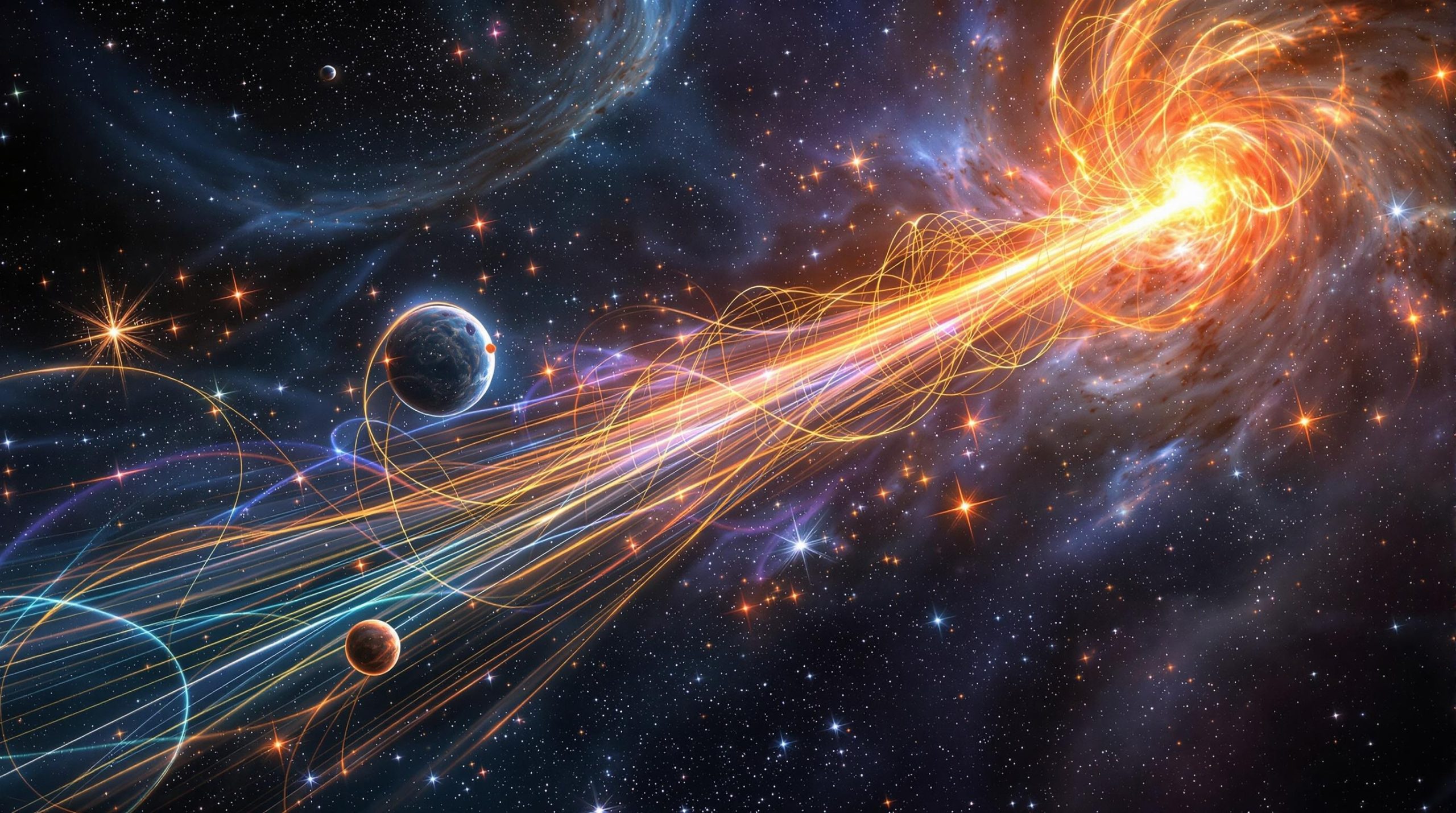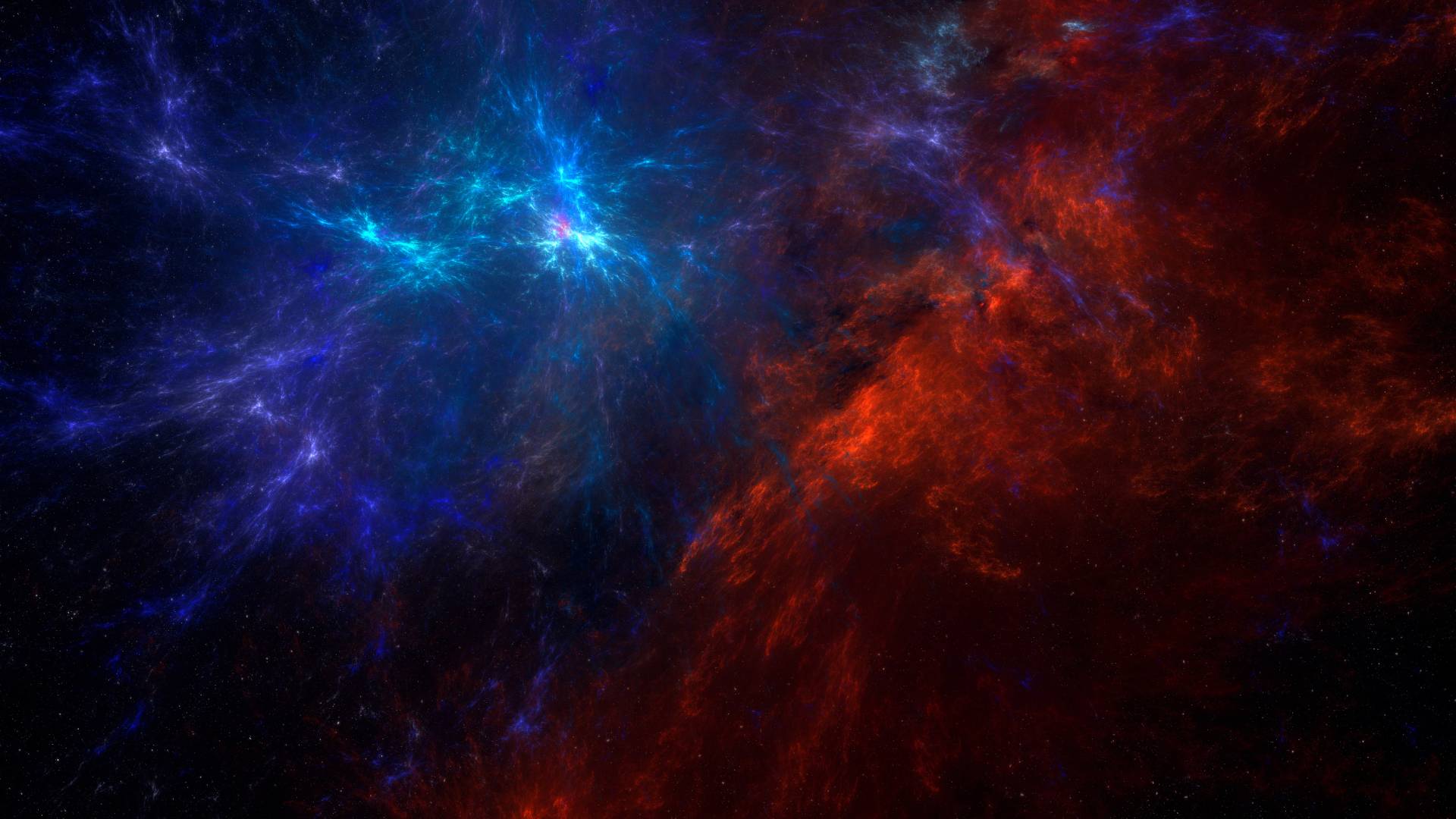The universe is full of mysteries, from black holes and dark matter to the enigmatic cosmic strings. These theoretical structures, first proposed in the 1970s, are thought to be remnants of the early universe—thin, incredibly dense filaments stretching across vast cosmic distances. If they exist, cosmic strings could reshape our understanding of spacetime, gravity, and even the fundamental forces of nature. But what exactly are they, and what role might they play in the cosmos? Let’s explore the fascinating world of cosmic strings. stay with spaceyv
The Origins of Cosmic Strings
The concept of cosmic strings originates from quantum field theory and cosmology. They are hypothesized to have formed during phase transitions in the early universe, much like cracks in ice as water freezes. When the universe rapidly expanded after the Big Bang, different regions cooled at different rates, possibly leading to the formation of these ultra-thin yet immensely dense structures.
Key Characteristics of Cosmic Strings
- Infinitely long or closed loops: Cosmic strings could extend indefinitely through space or form loops that eventually decay.
- Ultra-thin but incredibly dense: A cosmic string is predicted to be thinner than an atomic nucleus but could contain mass equivalent to a mountain per kilometer.
- Strong gravitational effects: Due to their immense density, cosmic strings could warp spacetime around them, affecting the motion of nearby objects and even bending light.
- Possible connection to fundamental forces: Some theories suggest that cosmic strings are linked to unification theories attempting to merge gravity with quantum mechanics.
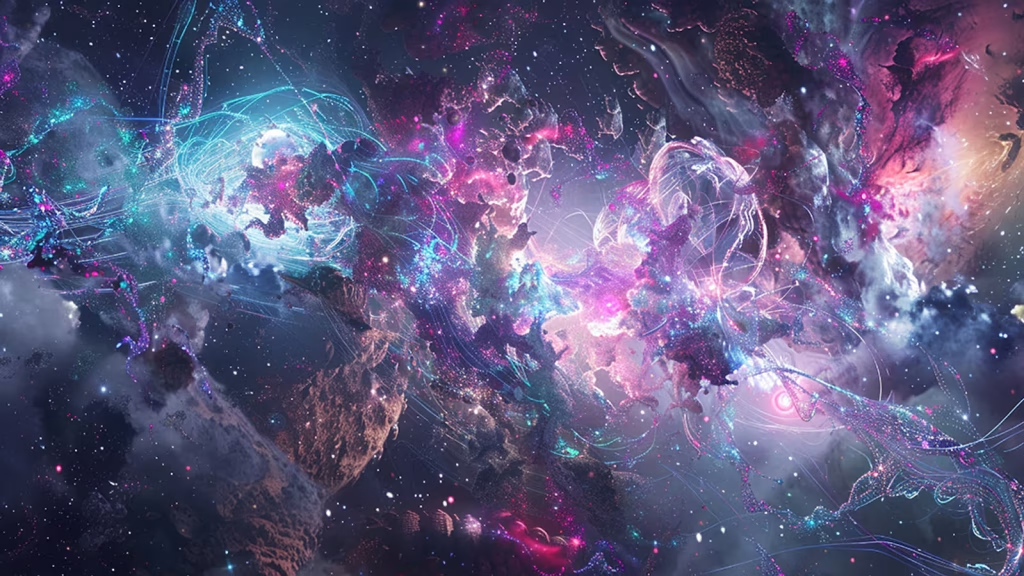
How Cosmic Strings Interact with Spacetime
Einstein’s general theory of relativity suggests that massive objects distort spacetime. Cosmic strings, despite their thinness, could produce unique gravitational effects due to their extreme mass density.
1. The Gravitational Pull of Cosmic Strings
Unlike traditional celestial bodies like stars or planets, cosmic strings do not pull objects toward them in a conventional way. Instead, they induce a unique conical geometry in spacetime. If you were to travel around a cosmic string, you might find yourself slightly displaced upon completing your journey—an effect known as gravitational lensing.
2. Cosmic Strings and Light Bending
One of the most intriguing implications of cosmic strings is their ability to act as gravitational lenses. As light from distant galaxies passes near a cosmic string, it could be split into two or more identical images. Detecting such lensing effects in deep-space surveys could be one of the best ways to confirm the existence of cosmic strings.
3. The “Wakes” of Cosmic Strings
As a cosmic string moves through the universe, it could leave a wake behind it—disruptions in matter distribution that could influence galaxy formation. These wakes might explain some of the large-scale structures observed in the cosmos, such as the vast cosmic filaments connecting galaxies.
4. Cosmic Strings and Cosmic Expansion
Some researchers believe cosmic strings might have contributed to the inflationary period of the universe. Their presence could have influenced the rapid expansion of spacetime, leaving behind signatures in the cosmic microwave background (CMB) radiation.
Could Cosmic Strings Explain Dark Matter and Energy?
One of the biggest mysteries in astrophysics is the nature of dark matter and dark energy, which make up around 95% of the universe’s mass-energy content. Some researchers speculate that cosmic strings might play a role in these elusive phenomena.
1. Cosmic Strings as Dark Matter Candidates
While cosmic strings themselves are unlikely to be dark matter, their gravitational effects could create regions of high-density matter, influencing galaxy rotation curves in ways similar to dark matter.
2. Cosmic Strings and the Accelerating Universe
Dark energy is thought to be responsible for the accelerating expansion of the universe. Some theories suggest that cosmic strings could be linked to the underlying physics driving this expansion, possibly acting as cosmic “tension lines” stretching spacetime apart.
3. Cosmic Strings and Exotic Particles
Another hypothesis suggests that cosmic strings might be linked to exotic particles that could interact with dark matter. These particles, if detected, could revolutionize our understanding of the fundamental building blocks of the universe.
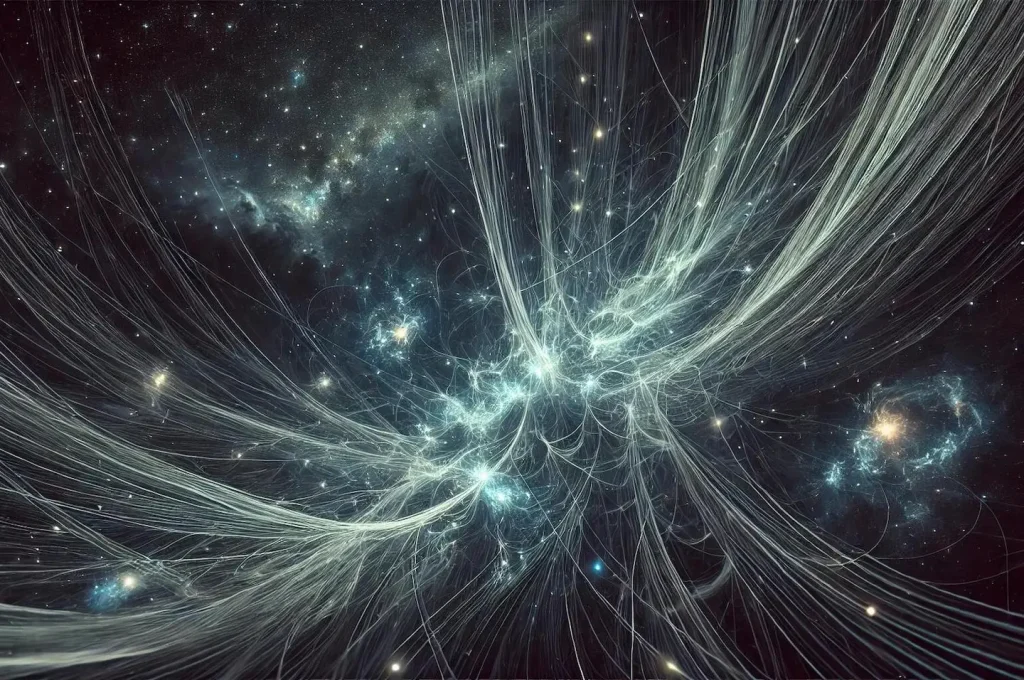
How Could We Detect Cosmic Strings?
If cosmic strings exist, how could we find them? Scientists have proposed several methods for detection:
1. Gravitational Lensing Surveys
As mentioned earlier, cosmic strings could split light from distant galaxies, creating multiple identical images. Advanced telescopes like the James Webb Space Telescope (JWST) and upcoming next-generation observatories might be able to spot these unique signatures.
2. Pulsar Timing Arrays
Pulsars—rapidly rotating neutron stars—emit incredibly precise radio signals. A passing cosmic string could slightly alter the arrival time of these signals, providing indirect evidence of its presence.
3. Cosmic Microwave Background (CMB) Anomalies
The CMB is the leftover radiation from the Big Bang. Certain temperature fluctuations in the CMB could be remnants of cosmic string interactions, leaving behind detectable imprints.
4. Gravitational Waves
When cosmic strings form loops and oscillate, they might release gravitational waves—ripples in spacetime. Detectors like LIGO and Virgo are searching for such signals, which could provide indirect proof of cosmic strings.
5. Fast Radio Bursts (FRBs) and Cosmic Strings
FRBs are mysterious, high-energy radio pulses from deep space. Some scientists speculate that cosmic string interactions could be one possible source of these enigmatic bursts.
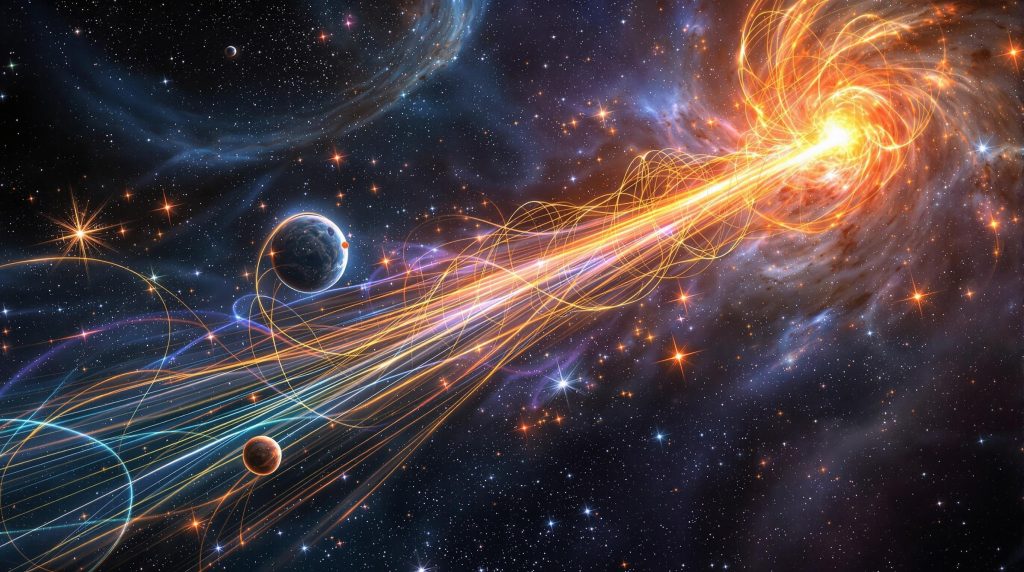
Could Cosmic Strings Be Harnessed for Advanced Technology?
If humanity ever confirms the existence of cosmic strings, could we use them? While highly speculative, some theorists have suggested mind-blowing applications:
1. Time Travel and Warp Drives
The extreme warping of spacetime around cosmic strings might allow for the possibility of closed timelike curves—paths in spacetime that loop back on themselves, theoretically allowing time travel.
2. Energy Extraction
Cosmic strings might store enormous amounts of energy. If advanced civilizations could harness this energy, it could provide a nearly unlimited power source, potentially surpassing even nuclear fusion.
3. Faster-Than-Light Travel
Some theories propose that cosmic strings, due to their spacetime distortions, might allow for shortcuts through space, much like wormholes. If true, they could revolutionize interstellar travel.
4. Cosmic Strings and Alien Civilizations
If advanced extraterrestrial civilizations exist, they might have already discovered and utilized cosmic strings for energy or transportation. Studying these structures could give us insights into the potential technologies of highly advanced beings.
Conclusion
Cosmic strings remain one of the most tantalizing ideas in modern physics. While they have yet to be confirmed, their potential implications for astrophysics, cosmology, and even futuristic technology are profound. If they do exist, they could help explain some of the deepest mysteries of the universe, from the formation of galaxies to the nature of dark matter and energy. As our observational tools improve, the search for these cosmic threads continues—and with it, the possibility of reshaping our understanding of reality itself.
What do you think? Could cosmic strings be the key to unlocking new frontiers in physics?
🚀 Stay tuned for more cosmic mysteries and deep-space theories!

